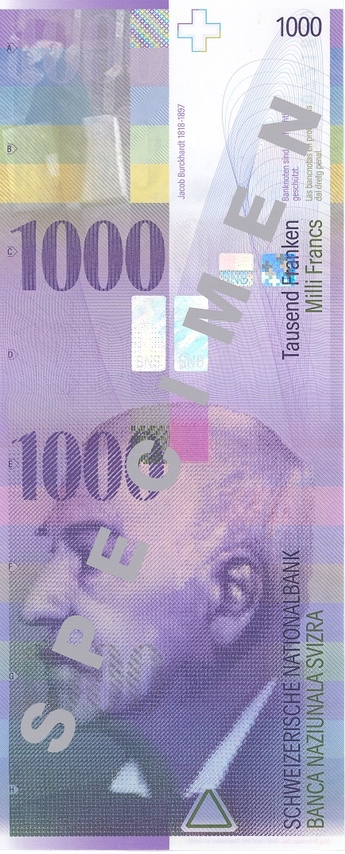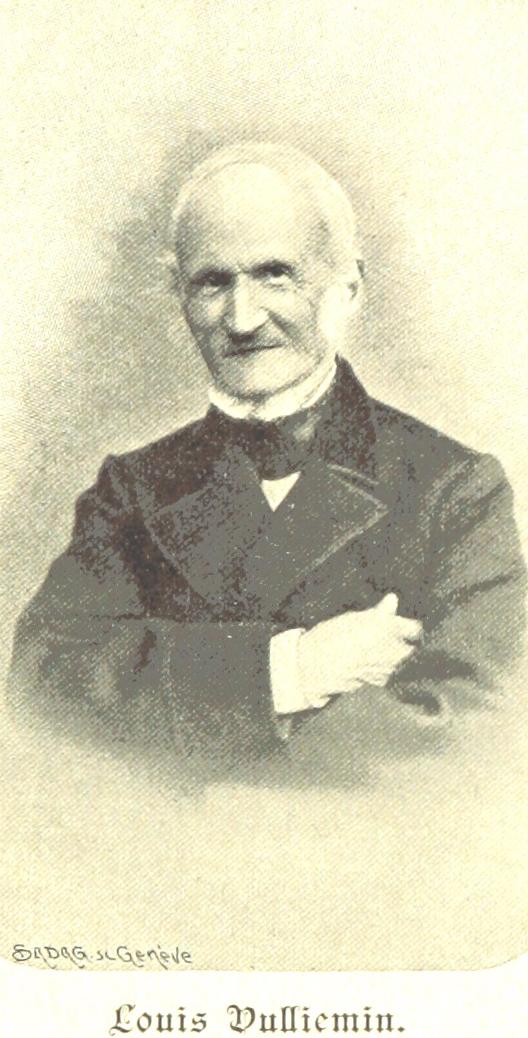|
Conrad Ferdinand Meyer
Conrad Ferdinand Meyer (11 October 1825 – 28 November 1898) was a Swiss poet and historical novelist, a master of literary realism who is mainly remembered for stirring narrative ballads like "Die Füße im Feuer" (The Feet in the Fire). Biography Meyer was born in Zürich. He was of patrician descent. His father, who died early, was a statesman and historian, while his mother was a highly cultured woman. Throughout his childhood two traits were observed that later characterized the man and the poet: he had a most scrupulous regard for neatness and cleanliness, and he lived and experienced more deeply in memory than in the immediate present. He suffered from bouts of mental illness, sometimes requiring hospitalization; his mother, similarly but more severely afflicted, killed herself. Having finished the gymnasium, he took up the study of law, but history and the humanities were of greater interest to him. He went for considerable periods to Lausanne, Geneva, Paris, and Ita ... [...More Info...] [...Related Items...] OR: [Wikipedia] [Google] [Baidu] |
Zürich
, neighboring_municipalities = Adliswil, Dübendorf, Fällanden, Kilchberg, Maur, Oberengstringen, Opfikon, Regensdorf, Rümlang, Schlieren, Stallikon, Uitikon, Urdorf, Wallisellen, Zollikon , twintowns = Kunming, San Francisco Zürich () is the largest city in Switzerland and the capital of the canton of Zürich. It is located in north-central Switzerland, at the northwestern tip of Lake Zürich. As of January 2020, the municipality has 434,335 inhabitants, the urban area 1.315 million (2009), and the Zürich metropolitan area 1.83 million (2011). Zürich is a hub for railways, roads, and air traffic. Both Zurich Airport and Zürich's main railway station are the largest and busiest in the country. Permanently settled for over 2,000 years, Zürich was founded by the Romans, who called it '. However, early settlements have been found dating back more than 6,400 years (although this only indicates human presence in the area and not the presence of a town that early). During ... [...More Info...] [...Related Items...] OR: [Wikipedia] [Google] [Baidu] |
Lausanne
Lausanne ( , , , ) ; it, Losanna; rm, Losanna. is the capital and largest city of the Swiss French speaking canton of Vaud. It is a hilly city situated on the shores of Lake Geneva, about halfway between the Jura Mountains and the Alps, and facing the French town of Évian-les-Bains across the lake. Lausanne is located northeast of Geneva, the nearest major city. The municipality of Lausanne has a population of about 140,000, making it the List of cities in Switzerland, fourth largest city in Switzerland after Basel, Geneva, and Zurich, with the entire agglomeration area having about 420,000 inhabitants (as of January 2019). The metropolitan area of Lausanne-Geneva (including Vevey-Montreux, Yverdon-les-Bains, Valais and foreign parts), commonly designated as ''Lake Geneva region, Arc lémanique'' was over 1.3 million inhabitants in 2017 and is the fastest growing in Switzerland. Initially a Celtic and Roman settlement on the shores of the lake, Lausanne became a town at ... [...More Info...] [...Related Items...] OR: [Wikipedia] [Google] [Baidu] |
Thirty Years War
The Thirty Years' War was one of the longest and most destructive conflicts in European history, lasting from 1618 to 1648. Fought primarily in Central Europe, an estimated 4.5 to 8 million soldiers and civilians died as a result of battle, famine, and disease, while some areas of what is now modern Germany experienced population declines of over 50%. Related conflicts include the Eighty Years' War, the War of the Mantuan Succession, the Franco-Spanish War, and the Portuguese Restoration War. Until the 20th century, historians generally viewed it as a continuation of the religious struggle initiated by the 16th-century Reformation within the Holy Roman Empire. The 1555 Peace of Augsburg attempted to resolve this by dividing the Empire into Lutheran and Catholic states, but over the next 50 years the expansion of Protestantism beyond these boundaries destabilised the settlement. While most modern commentators accept differences over religion and Imperial authority were im ... [...More Info...] [...Related Items...] OR: [Wikipedia] [Google] [Baidu] |
Counter Reformation
The Counter-Reformation (), also called the Catholic Reformation () or the Catholic Revival, was the period of Catholic resurgence that was initiated in response to the Protestant Reformation. It began with the Council of Trent (1545–1563) and largely ended with the conclusion of the European wars of religion in 1648. Initiated to address the effects of the Protestant Reformation, the Counter-Reformation was a comprehensive effort composed of apologetic and polemical documents and ecclesiastical configuration as decreed by the Council of Trent. The last of these included the efforts of Imperial Diets of the Holy Roman Empire, heresy trials and the Inquisition, anti-corruption efforts, spiritual movements, and the founding of new religious orders. Such policies had long-lasting effects in European history with exiles of Protestants continuing until the 1781 Patent of Toleration, although smaller expulsions took place in the 19th century. Such reforms included the foundation ... [...More Info...] [...Related Items...] OR: [Wikipedia] [Google] [Baidu] |
Renaissance
The Renaissance ( , ) , from , with the same meanings. is a period in European history marking the transition from the Middle Ages to modernity and covering the 15th and 16th centuries, characterized by an effort to revive and surpass ideas and achievements of classical antiquity. It occurred after the Crisis of the Late Middle Ages and was associated with great social change. In addition to the standard periodization, proponents of a "long Renaissance" may put its beginning in the 14th century and its end in the 17th century. The traditional view focuses more on the early modern aspects of the Renaissance and argues that it was a break from the past, but many historians today focus more on its medieval aspects and argue that it was an extension of the Middle Ages. However, the beginnings of the period – the early Renaissance of the 15th century and the Italian Proto-Renaissance from around 1250 or 1300 – overlap considerably with the Late Middle Ages, conventi ... [...More Info...] [...Related Items...] OR: [Wikipedia] [Google] [Baidu] |
University Of Zurich
The University of Zürich (UZH, german: Universität Zürich) is a public research university located in the city of Zürich, Switzerland. It is the largest university in Switzerland, with its 28,000 enrolled students. It was founded in 1833 from the existing colleges of theology, law, medicine which go back to 1525, and a new faculty of philosophy. Currently, the university has seven faculties: Philosophy, Human Medicine, Economic Sciences, Law, Mathematics and Natural Sciences, Theology and Veterinary Medicine. The university offers the widest range of subjects and courses of any Swiss higher education institution. History The University of Zurich was founded on April 29, 1833, when the existing colleges of theology, the ''Carolinum'' founded by Huldrych Zwingli in 1525, law and medicine were merged with a new faculty of Philosophy. It was the first university in Europe to be founded by the state rather than a monarch or church. In the university's early years, ... [...More Info...] [...Related Items...] OR: [Wikipedia] [Google] [Baidu] |
Basel
, french: link=no, Bâlois(e), it, Basilese , neighboring_municipalities= Allschwil (BL), Hégenheim (FR-68), Binningen (BL), Birsfelden (BL), Bottmingen (BL), Huningue (FR-68), Münchenstein (BL), Muttenz (BL), Reinach (BL), Riehen (BS), Saint-Louis (FR-68), Weil am Rhein (DE-BW) , twintowns = Shanghai, Miami Beach , website = www.bs.ch Basel ( , ), also known as Basle ( ),french: Bâle ; it, Basilea ; rm, label=Sutsilvan, Basileia; other rm, Basilea . is a city in northwestern Switzerland on the river Rhine. Basel is Switzerland's third-most-populous city (after Zürich and Geneva) with about 175,000 inhabitants. The official language of Basel is (the Swiss variety of Standard) German, but the main spoken language is the local Basel German dialect. Basel is commonly considered to be the cultural capital of Switzerland and the city is famous for its many museums, including the Kunstmuseum, which is the first collection of art accessible t ... [...More Info...] [...Related Items...] OR: [Wikipedia] [Google] [Baidu] |
Jacob Burckhardt
Carl Jacob Christoph Burckhardt (25 May 1818 – 8 August 1897) was a Swiss historian of art and culture and an influential figure in the historiography of both fields. He is known as one of the major progenitors of cultural history. Sigfried Giedion described Burckhardt's achievement in the following terms: "The great discoverer of the age of the Renaissance, he first showed how a period should be treated in its entirety, with regard not only for its painting, sculpture and architecture, but for the social institutions of its daily life as well." His best known work is ''The Civilization of the Renaissance in Italy'' (1860). Life The son of a Protestant clergyman, Burckhardt was born and died in Basel, where he studied theology in the hope of taking holy orders; however, under the influence of Wilhelm Martin Leberecht de Wette, he chose not to become a clergyman. He was a member of the patrician Burckhardt family. He finished his degree in 1839 and went to the Universi ... [...More Info...] [...Related Items...] OR: [Wikipedia] [Google] [Baidu] |
Louis Vulliemin
Louis Vulliemin (7 September 1797, in Yverdon-les-Bains – 10 August 1879, in Lausanne) was a Swiss theologian and historian. He was educated at Johann Heinrich Pestalozzi's institute in Yverdon, then studied theology at the Academy of Lausanne, being ordained as a pastor in 1821. Later on, he was honorary professor of history, philosophy and literature at the Academy (1837–79). From 1847 to 1864 he was also a professor of theology to the faculty of the Free Evangelical Church in Lausanne.Vulliemin, Louis Historischen Lexikon der Schweiz He was a founding member and first president of the ''Société d'histoire de la Suisse Romande'' (1837–55). Selected works With Charles Monnard, he published a Fr ...[...More Info...] [...Related Items...] OR: [Wikipedia] [Google] [Baidu] |





